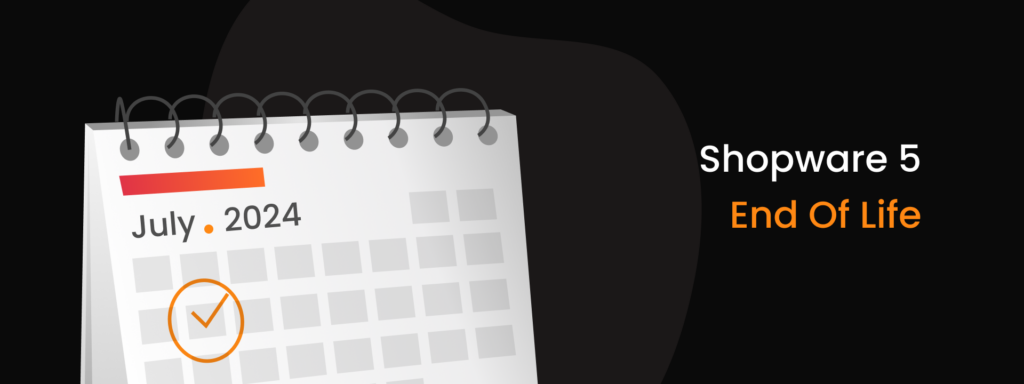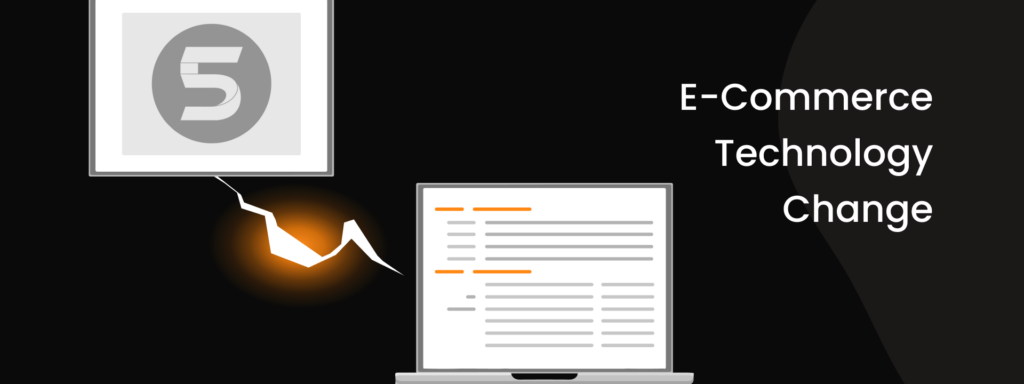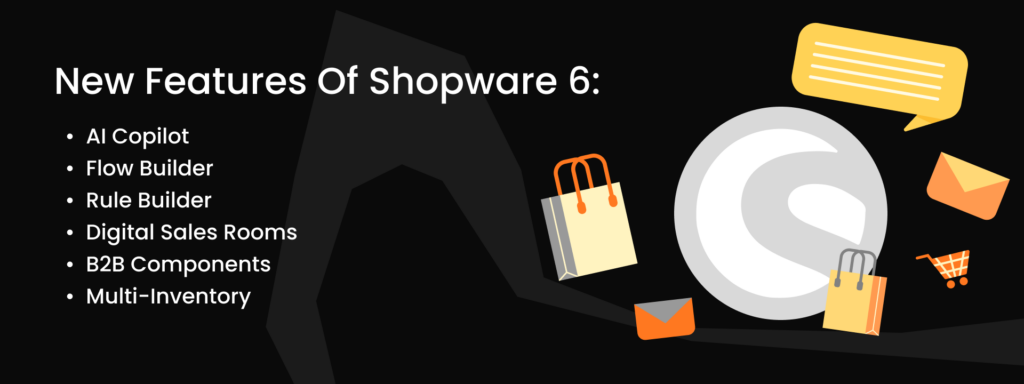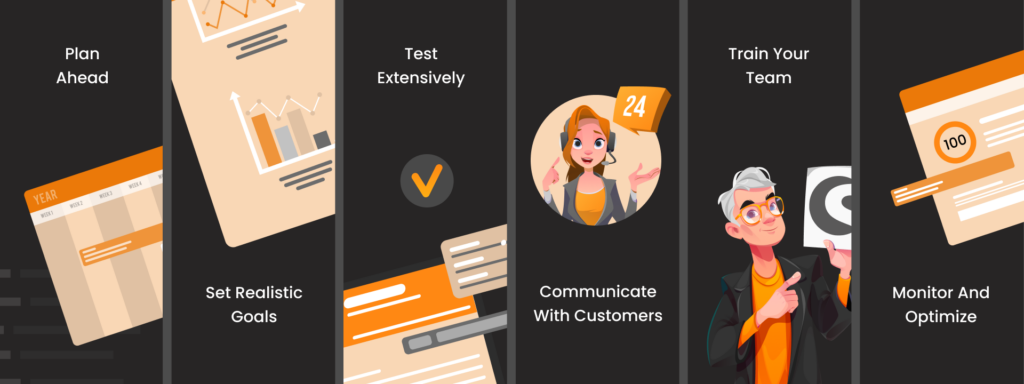As digital commerce evolves, so does the technology that powers online storefronts. Shopware 5 has been a popular e-commerce platform over the years, providing countless online store owners with the tools and features needed to succeed in the digital marketplace. The Shopware Documentation platform announced the end of the four-year transition period and that Shopware 5 development will be completely discontinued at the end of July 2024.

This article explores the implications of the Shopware 5 sunset and provides valuable insights into the next steps for businesses reliant on this platform. Our goal is to equip merchants with the necessary information and assistance to make a seamless migration to Shopware 6 or other e-commerce platform options, ensuring continuity and efficiency in their online operations.
Shopware 5 – history and successes
Before we dive into the future, let’s take a moment to reflect on the past. Shopware 5 was around on the 27th of April 2015 and quickly gained popularity among online retailers. One of the key factors that contributed to the success of Shopware 5 was its focus on user experience. The intuitive interface allowed even those with limited technical knowledge to set up and customize their stores without any hassle.

Another standout feature of Shopware 5 was its extensive customization options. Store owners could easily tailor their online shops to match their brand identity and create a unique shopping experience for their customers. From choosing different themes and templates to customizing the layout and design, Shopware 5 offered unparalleled flexibility in terms of customization. Furthermore, Shopware 5 boasted a robust plugin ecosystem that allowed store owners to enhance their online shops with additional functionalities.
Over five years, Shopware 5 continued to evolve and adapt to the changing needs of the e-commerce industry. But technologies develop extremely rapidly, so it is impossible to constantly only update the functionality of the platform. Shopware 6 was developed based on the experience of previous versions and has been available for productive use since mid-January 2020.
What does the Shopware 5 end-of-support mean for your online shop?
If your online store is currently running on Shopware 5, then it is important for you to understand what risks we will face if we do not make important informed decisions. While your store will continue to operate, it won’t receive updates, leaving it vulnerable to potential threats and falling behind competitors and customer expectations in terms of performance, functionality, and user experience. In addition, there may be compatibility issues with future web technologies and integrations, hindering your ability to provide the best shopping experience for your customers.
This decision was made by Shopware GmbH to focus their resources on the development of Shopware 6, the next generation of their e-commerce platform. While this may be disappointing news to some, it also presents an opportunity for growth and innovation.

Now that you are aware of the implications of the Shopware 5 end-of-support, it’s time to consider your next steps. There are several options available, each with its pros and cons. Let’s explore them further.
Staying on Shopware 5
If your store is currently running smoothly on Shopware 5 and you are satisfied with its performance, you may choose to continue using it despite the end of support. However, it’s important to weigh the risks associated with this decision. Without regular updates and security patches, your store may become more susceptible to cyber threats and outdated technologies. Additionally, staying on Shopware 5 may limit your ability to take advantage of new features and integrations.

This is one of the worst decisions you can make in this situation. After all, if you use outdated technology, you will lose the opportunity to use the latest features and functions, as well as the trust of customers.
Migration to Shopware 6
One of the most logical paths forward is migrating your store to Shopware 6. As the successor to Shopware 5, Shopware 6 offers a range of improvements and enhancements. From a modernized architecture to improved performance and scalability, Shopware 6 is designed to meet the evolving needs of e-commerce businesses. In addition to security fixes and security updates, Shopware 6 offers many new features compared to version 5, such as AI Copilot, Flow Builder, and Digital Sales Rooms.

You should consider that Shopware 6 is not an “updated” version of Shopware 5, but has been completely redeveloped with new technologies and functions in mind. Although the development company supports Shopware 5 customers and offers a migration connector and the migration assistant for Shopware 6 to help transfer the data, it can be very difficult. Even with the detailed Migration Guide, which contains instructions and various tips.
In such a situation, it is recommended to contact a specialized external agency for the Shopware Migration Service. This will help you complete your migration project safely and quickly, including the integration of new plugins, extensions, and third-party solutions.
E-commerce technology change
The end of life of Shopware 5 may be a good chance for you to change your e-commerce platform to a completely different one. While Shopware 6 has many strengths (such as marketing orientation, functionality, and flexibility), it also has weaknesses, like any solution. You need to choose the platform that meets the requirements of your business. And for this you need to understand your current target group and its needs, decide on a development strategy (B2C / B2B) and be aware of the necessary set of functions

When migrating to another technology and corresponding headless commerce platforms, you should consider Magento Migration.
Regardless of whether you choose to stay on Shopware 5 or migrate to Shopware 6, it’s important to acknowledge the broader trend of e-commerce technology change. As consumer behavior evolves and new technologies emerge, it’s crucial to keep up with the pace of innovation. This may involve exploring alternative e-commerce platforms or adopting additional technologies to enhance your online store’s capabilities. Stay informed and be open to new possibilities.
Discover what to do next after the end of Shopware 5!
Leave us your contact details and we’ll get back to you.
Advantages of Shopware 6
Shopware 6, an e-commerce platform, is designed to provide a modern and flexible solution for online businesses. Its key functions include the following aspects:
- Modularity and extensibility: The modular architecture allows you to customize and expand the platform according to your specific needs.
- API-First Approach: This approach provides seamless integration with third-party applications and services, which in turn increases flexibility and scalability for developers.
- Responsive design: This is crucial to ensure a positive shopping experience for customers on all types of devices.
- Emphasis on user interaction: Shopware 6 focuses on providing an improved user experience for both administrators and customers.
- Advanced Marketing Tools: A large number of marketing tools and features help companies promote their products effectively.
- Internationalization and Localization: Support for multiple languages and currencies makes the platform suitable for companies operating in the international market.
- Community and Support: The community helps the platform grow and users can find support, plugins and extensions in this community.
Also, unlike the previous version, Shopware 6 offers new features that were not available before. For example, you can use different types of sales channels, because of the API First approach, external vendors can use the same features as Shopware, and Shopware 6 allows you to customize all parts of the store.

In addition, regular security updates, which will ensure you the confident use and development of your online store.
Tips for migration away from Shopware 5
Migrating from Shopware 5 may seem challenging, but with the right approach, it can be a smooth process. Here are tips for a seamless migration:
- Plan ahead: Thoroughly plan and strategize your migration process, identifying risks and creating a timeline.
- Set realistic goals: Recognize the significance of the undertaking, set achievable goals, and invest time and resources.
- Test extensively: Conduct thorough testing before committing to identify and address issues, minimizing downtime.
- Communicate with customers: Keep customers informed about potential downtime, user experience changes, or store updates.
- Train your team: Educate your staff on the new platform for a smooth adaptation.
- Monitor and optimize: After migration, closely monitor performance and user feedback, optimizing the new platform.

Embrace Shopware 6 and the evolving e-commerce landscape. Navigate this migration with open-mindedness and careful planning to position your online store for continued success.
Conclusions
In summary, the end of support for Shopware 5 marks a turning point for online store owners. It’s time to reevaluate your current e-commerce infrastructure, assess your options, and make informed decisions. Let prioritizing your customers’ needs, adapting to changing technologies, and maintaining a competitive edge in the dynamic world of e-commerce remain key.
If you’re still not sure which way to go, get in touch with our team of eCommerce experts for more information and advice. Understanding the unique needs and challenges of your business will help you make an informed decision that aligns with your long-term goals.
